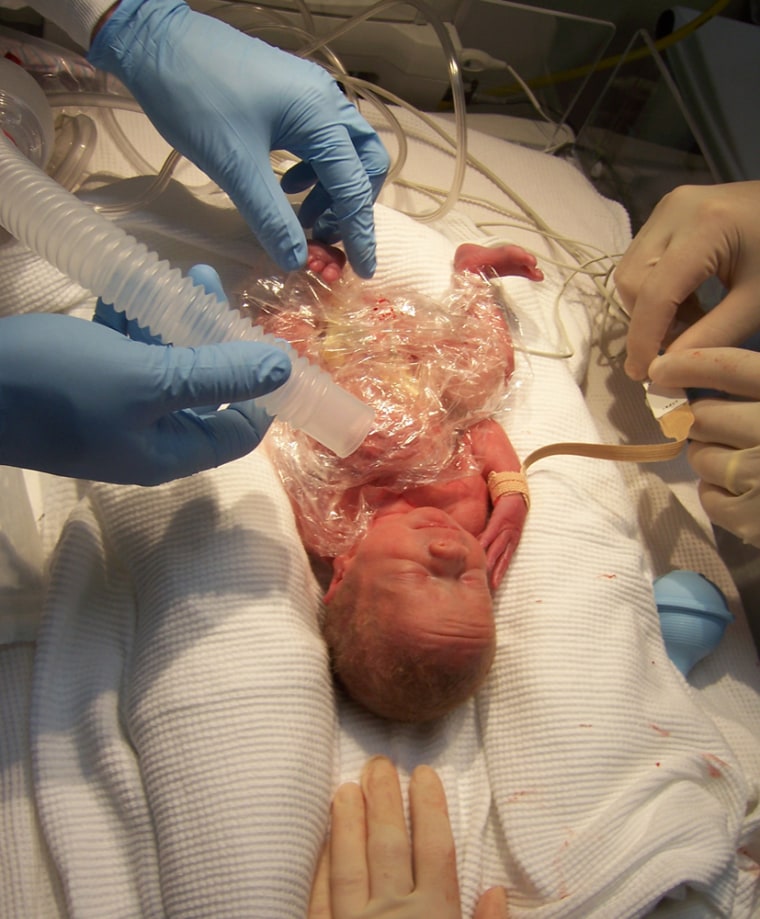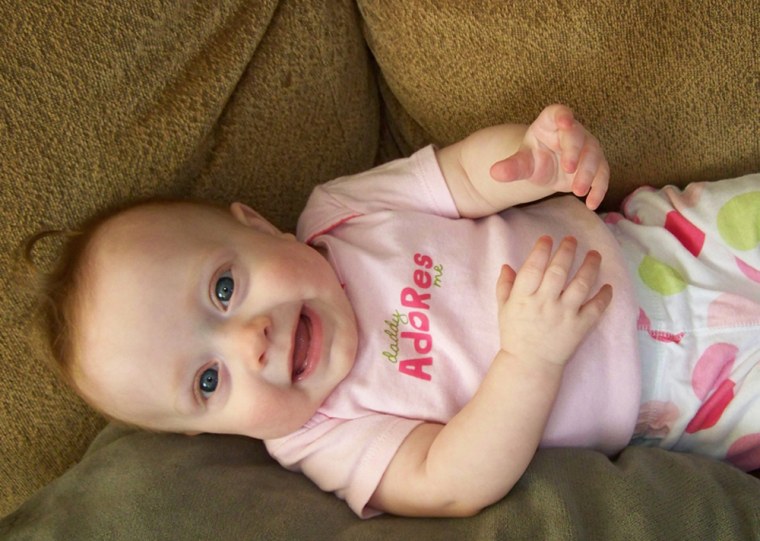Tammy George was a small baby, even before her mother went into labor 11 weeks early. Based on her size, doctors worried she wasn’t getting enough nutrition in the womb.
In the delivery room at Magee-Womens Hospital in Pittsburgh, she weighed less than a loaf of bread. In the 1970s, the odds of a 1-pound, 8-ounce baby surviving were slim.
She came home two months later, still so small that she could have fit in her dad’s lunchbox. But she hit her milestones — rolling over, eating jarred pears, walking — as expected. When she was 2, doctors discovered a severe hearing loss, but with hearing aids, it rarely held George back.
As an adult, she hardly ever thought about being born so tiny — until she found herself being draped for a C-section to deliver her fourth child, Hannah, after her water broke 28 weeks into George's pregnancy.
“There’s a picture my husband took — one last belly picture — and you can just see the terror,” George said. “I was trying to smile, but it’s a grimace. They told us that she would have an 80 percent chance of living and they didn’t know what kind of problems she would have. But I remember thinking ‘Well, I made it, so it’s got to be OK.’”
Emerging evidence suggests that premature births can run in families, though the genetic links are still being explored. A study of 14,000 U.K. women released last year found that being born prematurely increased a woman’s chance of having her own preterm baby by nearly 50 percent. Even having a sibling born prematurely raised a mother’s odds.
The list of problems extreme preemies may face is terrifying to any parent: infections, heart disorders, necrotized bowels, breathing lapses, potentially blinding eye disorders, cerebral palsy, developmental delays and behavior issues.
Doctor who cared for mom as preemie now helps her baby
On the operating table, George was comforted by a connection her mom had made in the waiting room with one of the neonatologists who would treat Hannah. He no longer had the same hair or waistline, but her mom remembered the name: Dr. Alan Lantzy.
He was one of the residents who had taken care of George during her stay in the Magee neonatal intensive care unit 32 years ago.
At that time, any baby under 2 pounds was considered extremely premature, said Lantzy, now chairman of the department of pediatrics at Western Pennsylvania Hospital.
“Most of those kids died if they had breathing problems,” he said. “She was very lucky to be able to get through that and be as fine as she is.”
Today, Lantzy said, probably 90 percent of those children survive, thanks to dramatic advances in treating immature lungs.
None of George’s other three children were born before 36 weeks. But scarring from previous C-sections complicated her fourth pregnancy. When she went into labor three months early, signs of bleeding and infection concerned doctors enough that they delivered the baby on July 30, 2010.

When Hannah was born, she weighed only 2 pounds, 15 ounces.
“There’s no muscles, just skin and wrinkles,” George said. “She was awake, I remember that. But she was just extremely frail, like a little bird.”
She had a mild brain bleed, lungs that needed help breathing, trouble regulating her heart rate, a belly that couldn’t handle food properly. But after three months, she was able to go home with a breathing monitor.
Today, Hannah is 9 months old. She’s feisty and a flirt, says George. Her three older brothers give up-to-the-minute reports every time she rolls over.

Hannah is still prone to lung infections. She works with a therapist to strengthen her muscles. The last hole in her heart is closing. And after months of home quarantine to shield her from potentially lethal germs, Hannah was recently able to go with her mom to shop for frilly dresses and attend church.
Things almost feel normal. And that’s precisely when, in the quiet moments in the car alone, George finds herself bawling.
“It’s so frantic and so up and down in the NICU, and you can barely process it. And now that things are OK you start thinking about what could have happened. And nobody else really wants to talk about it because the baby’s fine now. But now it’s calmed down enough that you really need to talk about it,” George said.
That’s when a good support system is invaluable. George joined an online group of preemie parents and caregivers on Inspire.com, who share everything from formula tips to their worst fears.
“There are moms on there whose preemies died at 8 months old, and they’re still on there and they’re still encouraging the new preemie moms,” George said. “It just amazes me that they have the strength to do that.”
By sharing the story of her own birth, George ended up helping others in that online community. It gave comfort to moms like Veronica Pacheco, whose son, Noah, was born 10 weeks early after she contracted the H1N1 influenza virus in 2009.
When she tries to imagine his future, the permutations are endless. Even the best doctors can only guess at the successes or limitations a child born prematurely might have, Pacheco said.
Then you read about someone like George: an extreme preemie who succeeds in school, goes to college, grows into a healthy adult and raises her own family.
“It gives you something that cannot be measured or properly described with words: hope,” said Pacheco. “Often times, hope is all we can cling to, that and each other.”